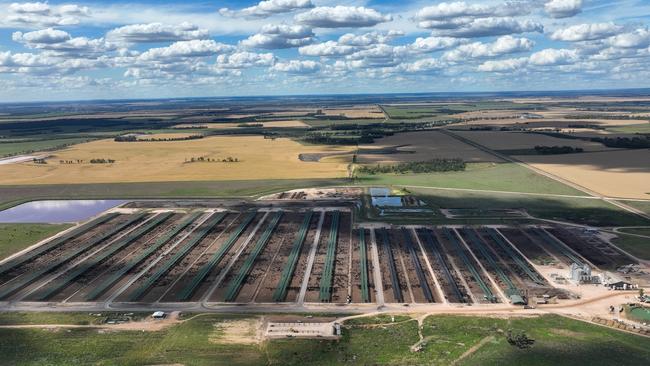Record number of cattle in Australian feedlots
The grain-fed beef industry outlook is positive after an 8 per cent lift in grain-fed beef sales last year following much higher demand.
A resurgence in interest in grain-fed cattle has seen a record number of cattle in Australian feedlots.
And red meat export statistics have show a lift in sales of grain-fed beef last year, up 8 per cent overall and boosted by much higher demand in the second half of the year.
The latest feedlot survey, which tallied the holdings in yards across Australia, showed there were 1,294,531 on feed at the end of December, a record for the industry.
A surge in numbers from the third to fourth quarters in NSW, South Australia and Western Australia were balanced by falls in Victoria and the nation’s largest feedlot state, Queensland.
Australian Lot Feeders Association president Barb Madden said the availability of feeder cattle in late spring and early summer had allowed feedlots to increase numbers.
The spike in WA feedlot utilisation was a normal occurrence at this time.
“Adjustments seen in WA reflect the seasonal nature of the western lot feeding system, which traditionally peak in the first and last quarter of the year,” Mrs Madden said.
And the rise in feedlot numbers is flowing through to grain fed exports.

Meat and Livestock Australia’s senior market information analyst Erin Lukey said there was a positive end to 2023 in terms of grain fed beef exports.
“We’ve seen quarter-on-quarter exports up 18 per cent year-on-year, helping to achieve an 8 per cent lift in 2023 calendar year grain fed meat export volume,” Ms Lukey said.
“It is encouraging to see grain fed exports grow over the year with exports relatively stable in the first half of the year then lifting in the latter part of the year.”
There has also been a lift in the capacity of feedlots by 1.1 per cent to 1.59 million cattle, although utilisation rates sat at 81.2 per cent in the final quarter of the year.
Victoria’s feedlot numbers at the end of December were 54,513 and while down from the September quarter, were still almost 5000 higher than at the same time the year before.
It was a similar situation for Queensland, which had a dip in numbers from September to December but still almost 75,000 higher than 12 months ago.
Meanwhile the national feeder steer indicator has fared better than many other indicators in the past 12 months and closed early this week at 338c/kg liveweight and hit a peak of 357c/kg in early February. A year ago, it was trading at 378c/kg.




